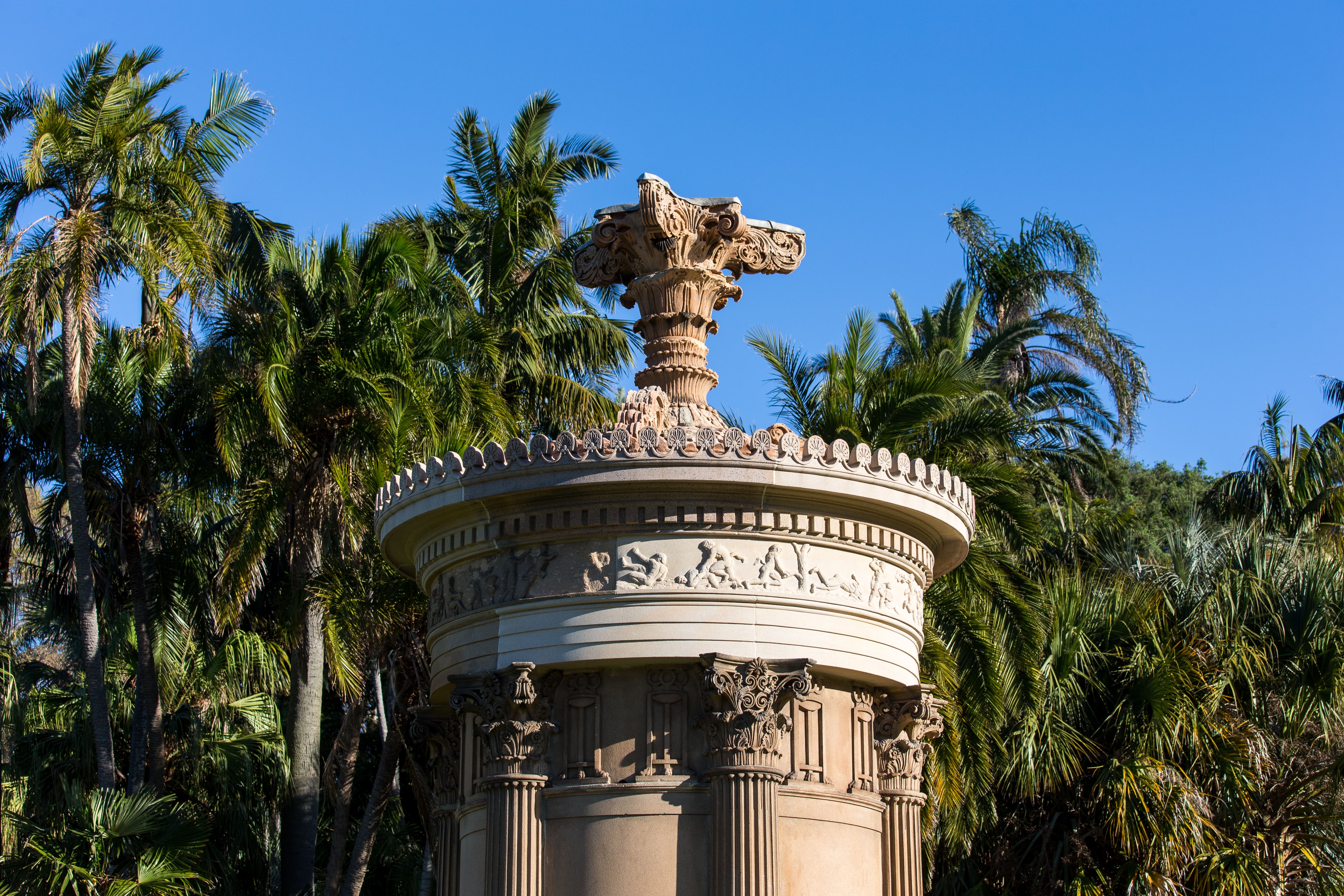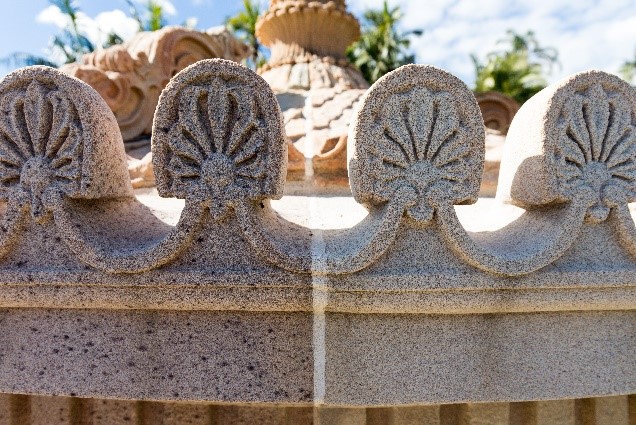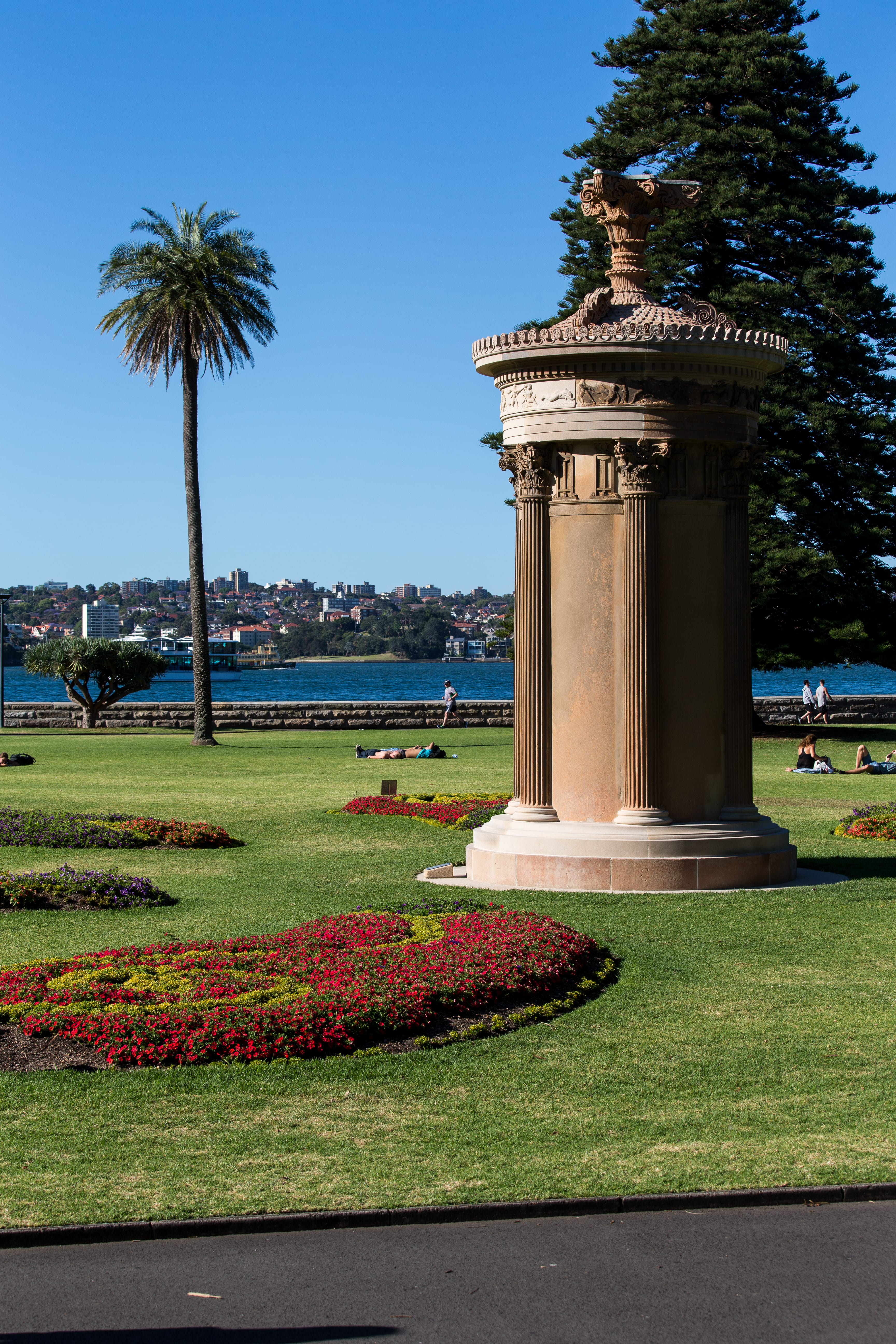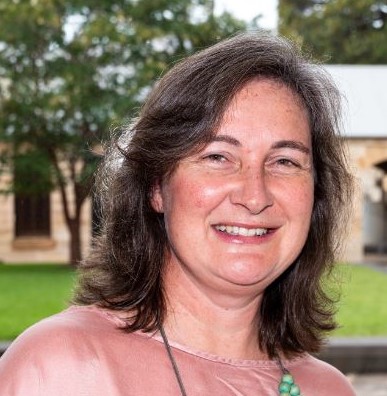Sydney Choragic Monument of Lysicrates
Client:
Royal Botanic Gardens and Domain Trust an Lysicrates Foundation
Location:
Royal Botanic Gardens near Farm Cove Sea Wall
Services:
2015 - 20 conservation
Jointly funded project with the Minister’s Stonework Program
Monument of Antiquity
Sydney’s Choragic Monument of Lysicrates is located in the Royal Botanic Gardens, near the Farm Cove seawall. The sandstone monument is a copy of the original, which is near the Acropolis in Athens and dates from 334 BCE.
The purpose of the original was to display the trophy endowed by Lysicrates, the patron (choragus) of musical and theatrical performances during the annual Festival of Dionysus. The story of the Greek original and its links with Sydney’s replica is a fascinating and multifaceted journey that includes important historical figures, its typically classical form and exceptional craftsmanship. The Minister’s Stonework Program was associated with conserving the Sydney monument, initially in the 1990s then between 2014 and 2017.
The original Choragic Monument of Lysicrates is of architectural importance and of interest to Greek scholars and students of architecture. It was the first ancient monument built in the Corinthian style and is featured in architectural history books as one of its prime examples.
The frieze is carved in bas-relief and represents the dramatic story of how Tyrrhenian pirates captured the god Dionysus. In anger, Dionysus filled their ship with vines and phantom beasts, and when the pirates leapt into the sea they were transformed into dolphins. The monument’s six fluted columns terminate in Corinthian capitals and form a circular colonnade. The cornice is crowned with a series of Vitruvian scrolls and surmounted by a cupola finished in a thatch of carved laurel leaves, symbolising victory.
In 1658, a Capuchin monastery was built on the site of the original Choragic and it was adapted to become a library and reading room. Lord Byron lodged at the monastery from 1810 to 1811 and wrote poetry inside the monument’s chamber. In 1751, English architects James Stuart and Nicholas Rivett prepared drawings of the Choragic Monument while in Athens during their grand tour of Europe. These engravings were included in their publication called The Antiquities of Athens; a work that deeply influenced Greek Revival architecture.
We are fortunate to have an accurately proportioned copy of this monument in the Royal Botanic Gardens, carved in beautiful Yellow Block Sandstone from Sydney. There are approximately 30 replicas of the monument worldwide – but Sydney’s is widely acknowledged to be the most accurate, differing only in minor details and just slightly smaller than the original.

Sydney’s Choragic
James Martin – three times Premier of NSW and the Chief Justice after whom Martin Place is named – commissioned the Sydney monument for the garden of his grand house in Potts Point, known as Clarens. He had a passion for all things classical, particularly literature and art, and it is believed that Sir John Young (a former Lord High Commissioner of the Ionian Islands) gave Martin a copy of Stuart and Rivett’s The Antiquities of Athens. It’s also thought that Lord Byron was Martin’s favourite poet. The Sydney monument therefore illustrates nineteenth-century Europe’s fascination with ancient Greece and the subsequent importing of those ideas and ideals to Australia.
Carved from Pyrmont Yellow Block Sandstone in 1870 by Walter McGill, the monument demonstrates the stonemason’s high-quality carving and reproduction skills. During World War II, Martin’s land was resumed to construct a graving dock between Potts Point and Garden Island, and the monument was relocated for its safety to the Royal Botanic Gardens in 1943.

Breaking new ground with an ancient spade
In 2014, private citizens Patricia and John Azarias noticed that the Sydney Choragic Monument was in need of some care during a stroll in Sydney’s Royal Botanic Gardens. Inspired, they created the Lysicrates Foundation to raise funds from private donors, and the State Government’s Minister’s Stonework Program matched the funds dollar for dollar. (This is the first public-private partnership that the Program has undertaken.)
Since 2015, the Lysicrates Foundation has held an annual playwriting competition, known as The Lysicrates Prize Competition. Its winners are democratically chosen by the audience and announced at a gathering around the monument in the Sydney Royal Botanic Gardens.
The primary objective for conservation works carried out by the Minister’s Stonework Program was to retain as much of the original sandstone as possible and to prolong the life of the stone. A major challenge was deciding on the level of stone replacement, given the exposure to harsh environmental conditions. One of the three stones encompassing the frieze had lost all its recognisable detail and had to be recarved. The others are in a reasonable weathered condition, their deterioration slowed by desalination and repointing the upper areas to prevent water ingress.

Timeline of major events
- 334BCE: The original Choragic Monument of Lysicrates is constructed in Athens.
- 1762: Stuart and Rivett’s drawings of the Choragic Monument are published.
- 1810-11: Lord Byron writes poetry inside the monuments chamber.
- 1870: A replica choragic monument is carved by the stonemason Walter McGill for James Martin’s Garden in Potts Point.
- 1943: the replica is relocated to the Royal Botanic Gardens during World War II.
- 1997: the Minister’s Stonework Program prepares a Conservation Management Plan and undertakes conservation works, including cornice replacement.
- 2014-17: funding from the Royal Botanic Gardens and Australia’s Lysicrates Foundation enables further conservation by the Program, including recarving a panel of the frieze.
- 2015: the annual Australian Lysicrates Prize for playwrights is established.
- 2017: National Trust award for Conservation.
Client:
Royal Botanic Gardens and Domain Trust an Lysicrates Foundation
Location:
Royal Botanic Gardens near Farm Cove Sea Wall
Services:
2015 - 20 conservation
Jointly funded project with the Minister’s Stonework Program.
